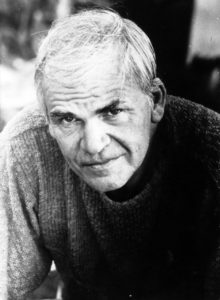It’s June 1976- I just crossed the border between Afghanistan and Pakistan.
Because the Khyber Pass is on the Pakistani side I have to change driving from right to left in my Citroën 2CV4. As being a Dutchman, I only have a mirror on the left side of my car. That shows to be far from useful in Pakistan!
It’s not easy to master the Khyber Pass all by myself. The bad road is snaky and sometimes the side of the abyss is very near. I have to avoid using my brakes because then I will slip away on the gravel and will certainly end somewhere in the far deep.
After a couple of hours while doing my best to avoid collisions with big trucks coming towards me, I get a beautiful view on the Indus Valley. Later on I will cross this famous river.
Landi Kotal, the first settlement in Pakistan, looks like a town in a Western movie.
Wooden houses with balconies, horses and carts in the streets and everywhere there are guns for sale. I am invited by a local craftsman to have a look at his rifles and he offers me a handmade kalashnikov for not more than 100 dollars. I tell him that I prefer to spend that amount of money on petrol to drive around in his country. Although he is quite persistent in selling while shooting in the air many times, I leave him in peace without any hole in my car.
It’s not a friendly welcome in Pakistan.
Most travellers by car cross the country as quick as possible while looking for the much more “peaceful” country of India. But I was told that northern Pakistan should be one of the most beautiful parts of the Lower Himalayas. In this region there are two small rivers coming down from the snow capped mountains following their own valley, the Swat in the Swat Valley and the Kunhar in the Kaghan Valley.
The first should be rather touristic, the other one hardly visited. Heading for the last one I have to drive to Islamabad/Rawalpindi first. From there I find the turn off while following the climbing road to Murree. Although it’s summertime there are not many owners of all those beautiful summer bungalows at home.
Fortunately there is a shop to buy some simple food. I pass the two little towns of Abottabad and Mansehra,
I fill up with petrol and head for Naran in the Hazara Province. While following the steep road up I notice that it’s cooling off. I close the canvas rooftop of my 2CV4 to keep the heat in. Although the sun is shining, snow capped mountains are coming near. It’s beautiful where ever I look but the road is getting worse. It looks like snow and ice have ruined the tarmac since last year. I wonder for how long I will be able to follow the river upstream. Hopefully I will reach Naran and may be a beautiful lake further on.
I am used to park my car somewhere in free nature to spend the night but I find a small rest house in the neighbourhood of Naran where I am welcomed to park my car to sleep in while using the amenities of this simple wooden building. Just by coincidence I notice a funny car on the small parking lot nearby. It’s a Citroën 2CV4 Break. The number plate shows me the origin. The car belongs to a young Swiss couple. It’s unbelievable to see two simple Citroën cars parked next to each other in the Kaghan Valley in northern Pakistan in 1976!
We meet in harmony and they tell me special celebrations will be held in Hemis Gumpa in Leh/Ladakh in India. This celebration will be open to tourists this year for the first time but they themselves have no time left to join the festivities. When it will happen they cannot tell me but it will be somewhere in July. Then suddenly I realize that I had a talk with some friends of friends of mine in Holland about half a year before I started my trip in my “Ugly Ducky” while telling me that they are going to visit an exceptional festival far away from the well known tourist trail in a group of selected people from Holland. I did not have a clue at that time what they were talking about.
When I started my trip in my Citroën in April 1976 I had in mind to spend some time at the south coast of France, not knowing to be in Pakistan some months later. It certainly will be a miracle to meet those Dutch in Leh.
I still have a month to go so I decide to stay here for a couple of days. The Swiss are very friendly and one day we decide to follow the road leading out of Naran into the mountains. They as well were told about a beautiful lake so we leave our cosy place. The first stretch is not easy. It looks as no traffic has left Naran for quite a while.
The road is getting quite dangerous.
Not only because of steep cliffs but also the surface is rather bad and very stony. There is snow everywhere as well. We both have simple 2 wheel drive cars with just a handful of horsepower so we cannot cross the huge landslide in front of us which blocks the road completely. That is a great pity because we are eager to see the lake.
We park our cars and collect some food and water in our small backpacks. We will give it a try to reach the lake by foot. The road is completely gone by snow but some locals have made a track from branches and stones to cross. It takes us about an hour to the moment we see the lake called Saif ul Maluk (or Saiful Muluk) which is glistering in the sun although there are some clouds. It’s like a fata morgana to find this beautiful lake with snow capped mountains around it. The temperature is fine but the water of the lake will be much too cold to take a bath.
While getting nearer to the lake we find the rest of the road in rather good condition because the lake is situated in a valley. We follow this track all the way to the end of the lake. We tease each other while throwing snow balls and we enjoy the complete serenity of the nature around us. There is no people, no animals, even no birds to spot. We all wonder how this beautiful place will look like in summer time. For the next two months some snow will melt but we are not sure if cars ever can reach the lake and even beyond during July and August. After that it will start snowing again.
We walk back to our cars and in the late afternoon and we park both our “mini vans” near the rest house. The owner welcomes us with a cup of tea. With some proud I tell everybody that tomorrow it will be my 26th birthday and I like to celebrate it but I actually do not know in what way. There are no alcoholic drinks for sale, there will be no fresh fruits or vegetables, no salted peanuts or French cheese with toast, neither potatoes nor spaghetti and the owner of the house does not sell any sort of meat.
The landlord approaches me. He offers me the possibility to “catch” my own meal to please myself and the Swiss on my birthday. Tomorrow I can give it a try. If I fail, he guarantees me at least six fish, the daily maximum. I wonder where he is talking about. On my birthday I borrow on his advice a rod with some spinners from him. Unfortunately I lose all spinners and I have to pay him some money as compensation. That was the deal we agreed before.
But now it’s his turn. Within half an hour he catches 6 beautiful rainbow trout from the Kunhar river.
I get all fish for free as being a birthday present. Unfortunately I do not have a decent kitchen to fry them. For a handful of Pakistani Rupees the landlady offers us to prepare a great meal. He and his wife reject my invitation to join the three of us.
That evening I enjoy one of the best meals I ever had. Both Swiss as well. Together with the trout we get French fries and even a nice salad with onions and tomatoes. A copious and super tasty birthday meal! The only thing we miss is a glass of chilled white wine.
It is a pity that the Swiss cannot stay much longer. They are heading west, back home to Switzerland. I am heading east in search for some Dutch at a festival in Leh/Ladakh (India). For the Silo, Frank van den Berge.


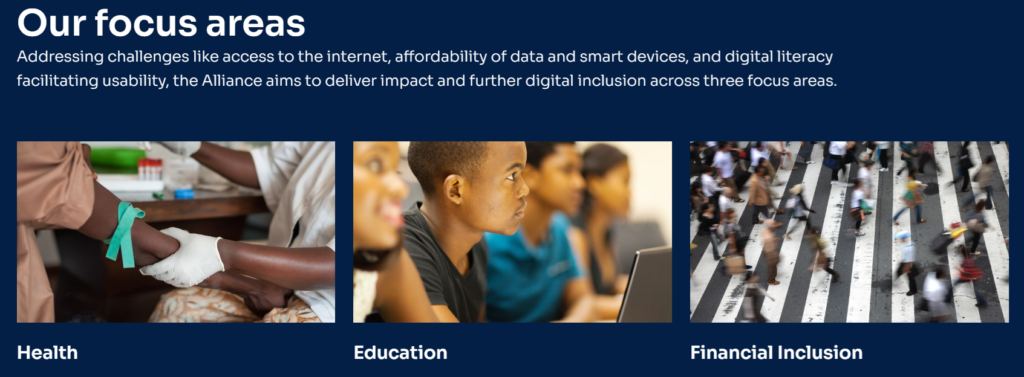



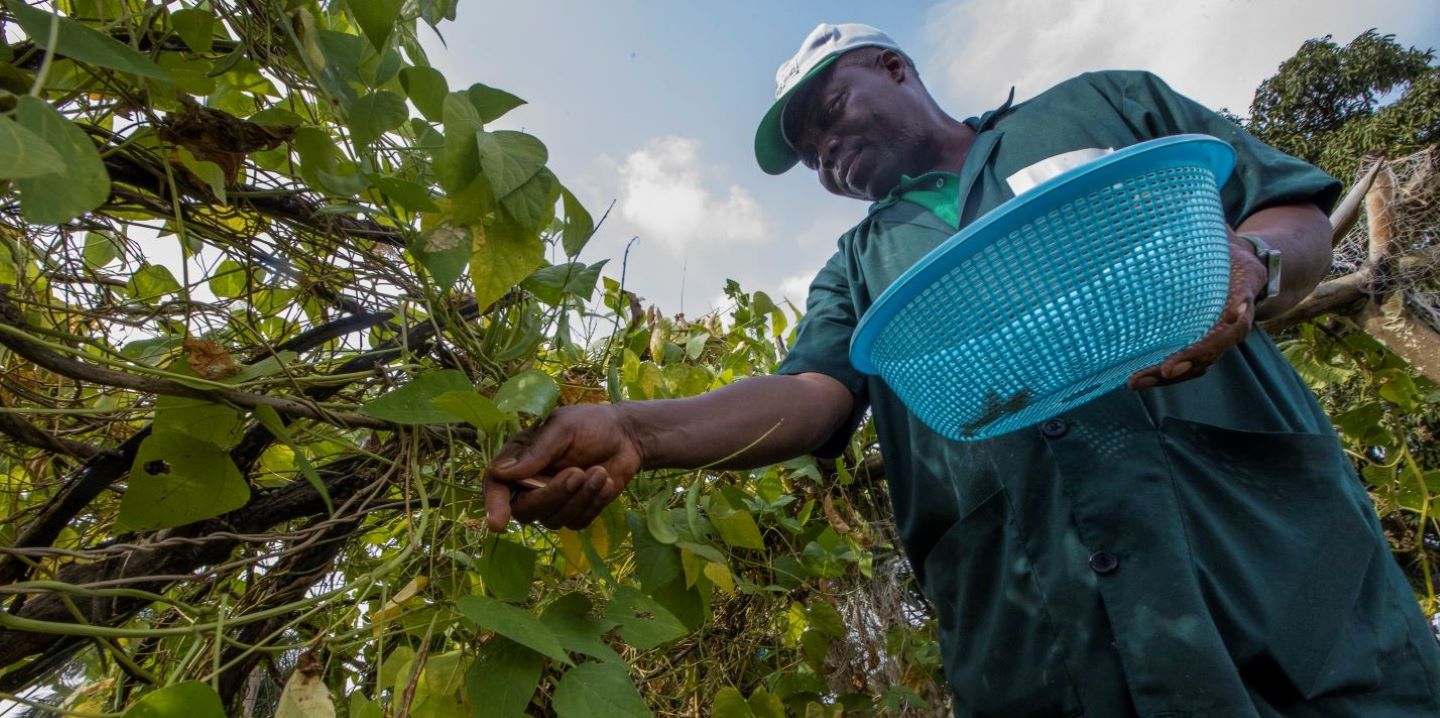

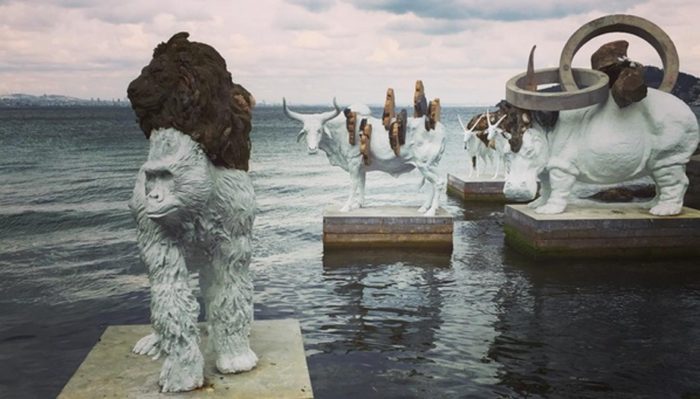
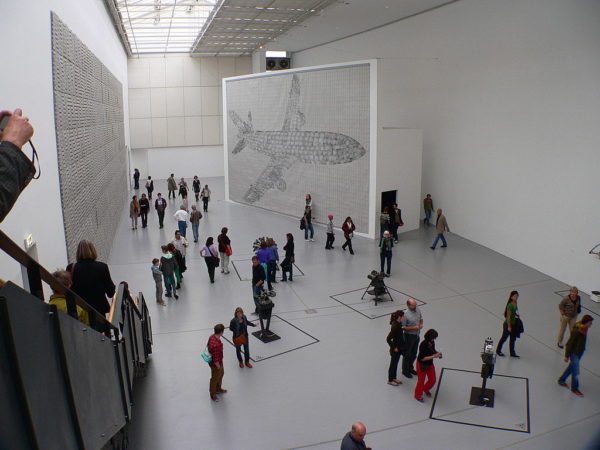
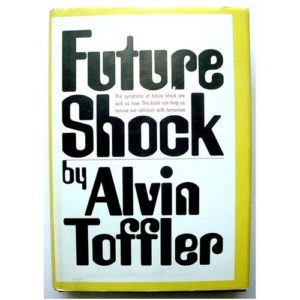 This year’s exhibition is rooted in Alvin Toffler’s 1970 book, Future Shock. Toffler examined the idea of collective shock as a result of living during a time of extreme change. Spinning out from the ancient curse, “may you live in an era of change” this year’s biennale seeks to disrupt the notion that extreme change is outside the ordinary and instead posits that all of human existence has been based around rotating times of chaos and calm. Open call for the 2017 biennale ended in December, but for future events (the next is slated for 2019) artists are always welcome to contribute their work for consideration.
This year’s exhibition is rooted in Alvin Toffler’s 1970 book, Future Shock. Toffler examined the idea of collective shock as a result of living during a time of extreme change. Spinning out from the ancient curse, “may you live in an era of change” this year’s biennale seeks to disrupt the notion that extreme change is outside the ordinary and instead posits that all of human existence has been based around rotating times of chaos and calm. Open call for the 2017 biennale ended in December, but for future events (the next is slated for 2019) artists are always welcome to contribute their work for consideration.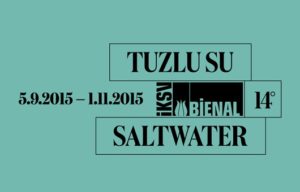 And in 2015 Saltwater: a theory of thought forms. The 2017 biennial is working in collaboration with the 2017 Istanbul film festival, both of which are exploring the title topic A Good Neighbor. In addition to the contemporary art program, the biennial will include ten feature and five short films all curated by Elmgreen and Dragset. The films (as well as the art) will look at the concept of home as a means of portraying identity and the intricacies of community and co-existence. The 2017 Istanbul Biennial runs from September 16-Novermber 12.
And in 2015 Saltwater: a theory of thought forms. The 2017 biennial is working in collaboration with the 2017 Istanbul film festival, both of which are exploring the title topic A Good Neighbor. In addition to the contemporary art program, the biennial will include ten feature and five short films all curated by Elmgreen and Dragset. The films (as well as the art) will look at the concept of home as a means of portraying identity and the intricacies of community and co-existence. The 2017 Istanbul Biennial runs from September 16-Novermber 12.
